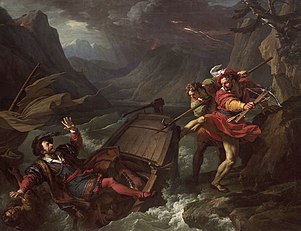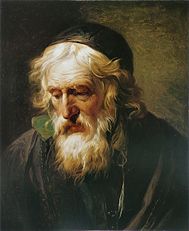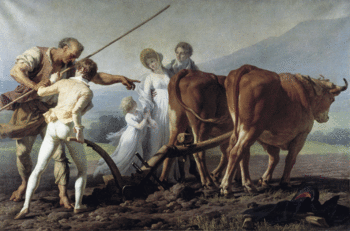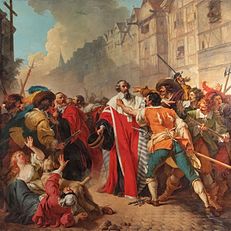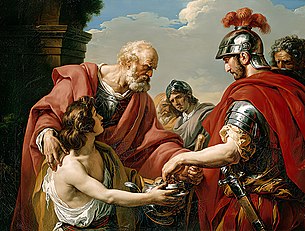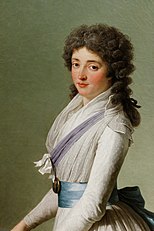François-André Vincent
François-André Vincent | |
|---|---|
 Portrait of François-André Vincent by Adélaïde Labille-Guiard, painted 1783 | |
| Born | 30 December 1746 |
| Died | 4 August 1816 (aged 69) Paris |
| Nationality | French |
| Occupation | Neoclassical painter |
| Spouse | |
François-André Vincent (French pronunciation: [fʁɑ̃swa ɑ̃dʁe vɛ̃sɑ̃]; 30 December 1746 – 4 August 1816) was a French neoclassical painter.[1]
Biography
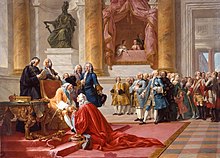
Vincent was born in Paris in 1746,
In 1790, Vincent was appointed master of drawings to
He was a leader of the neoclassical and historical movement in French art, along with his rival Jacques-Louis David, another pupil of Vien. He was influenced by the art of classical antiquity, by the masters of the Italian High Renaissance, especially Raphael.[2][3] François-André Vincent was one of the principal innovators of the subjects and themes in French art of Neoclassical style and his works were of a high standard.[2] He was one of the founder members of the Académie des Beaux-Arts – part of the Institut de France and the successor to the Académie royale – in 1795. Towards the end of his life he painted less due to ill health, but he continued to receive official honours.
Works
-
Georges Cuvier
-
Alcibiades being taught by Socrates, by François-André Vincent
-
Zeuxis Choosing his Models for the Image of Helen from among the Girls of Croton, detail
-
Choosing his Models for the Image of Helen from among the Girls of Croton, detail
-
William Tell's leap (Tellensprung) from the boat of his captors at the Axen cliffs
-
Greek priest
-
The Ploughing Lesson
-
Portrait of a man.
-
Molé et les factieux, Mathieu Molé (1584-1656), French statesman, and rebels
-
Belisarius by François-André Vincent, painted 1776
-
Portrait of Pierre Roussea
-
Portrait de la baronne de Chalvet-Souville, née Marie de Broutin (detail)
See also
- Adélaïde Labille-Guiard
- Portrait of Baron Whitfield Fine Art
References
- ^ "The Painter François-André Vincent". .edu. Retrieved 13 March 2015.
- ^ a b c "VINCENT, François-André". www.wga.hu. Retrieved 13 March 2015.
- ^ "Francois-Andre_Vincent_1746-1816". museefabre.montpellier-agglo.com.
Further reading
- Book about François-André Vincent's life: The Perfect Foil: FranCois-Andre Vincent and the Revolution in French Painting by Elizabeth C. Mansfield
- More works





